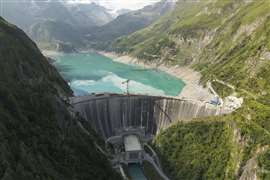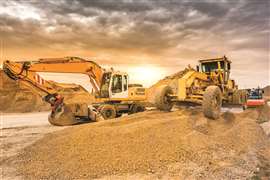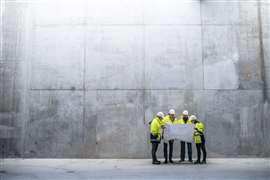Read this article in Français Deutsch Italiano Português Español
Lessons from the failures of HS2 high-speed railway. What went wrong?
20 June 2025
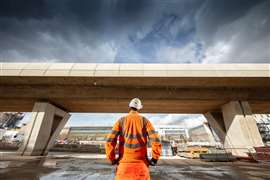 A completed section of the Curzon No 3 viaduct on the HS2 high-speed railway in Birmingham, UK (Image: HS2)
A completed section of the Curzon No 3 viaduct on the HS2 high-speed railway in Birmingham, UK (Image: HS2)
The UK’s new high-speed railway, HS2, was supposed to be the best and fastest high-speed railway in the world, connecting London with the North of England.
But having been drastically reduced in scope in 2023 due to huge cost overruns, removing the line running from Birmingham to Manchester and Leeds, it emerged that even the section that remains is unlikely to open until 2033.
What was originally conceived as the first phase of the project, from London to Birmingham, could cost as much as £61.8 billion (€72.4 billion). That compares to the original budget of £33 billion (€38.6 billion) for the entire line running to the North, and an intended opening date of 2026.
That’s the question that both a new report and an assessment from HS2 Ltd’s new chief executive Mark Wild, who was appointed in December 2024, have aimed to address.
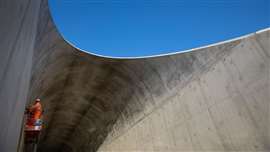 Contractors building HS2 have completed work on a pair of extensions to the southern portal of its longest tunnel to eliminate the possibility of ‘sonic boom’ being created by high-speed trains entering at 200mph. (Image courtesy of HS2)
Contractors building HS2 have completed work on a pair of extensions to the southern portal of its longest tunnel to eliminate the possibility of ‘sonic boom’ being created by high-speed trains entering at 200mph. (Image courtesy of HS2)
Stewart Review’s findings
First of all, the Stewart Review, led by former Crossrail chief executive James Stewart and published on 18 June, focuses on HS2 but also reviews how the UK’s Department for Transport governs its major projects more generally.
It said there was “no single explanation” for the failings of the HS2 programme. And while it acknowledged that external disruptions like Brexit, the war in Ukraine, the Covid-19 pandemic, and high inflation all played a role, it laid the brunt of the blame on government departments and the private sector supply chain.
Among the key findings of the Stewart Review were:
- Main works civils contracts ‘a collective failure’: The review found that cost overruns on the main works civils contracts (MWCCs) are the most significant contributors to the overall cost increase. “HS2 Ltd must take the prime responsibility for the performance of the MWCCs. It selected the contractual approach and is responsible for the contract management,” it said. But it added that “many other public stakeholders were involved, particularly prior to the award of contracts. And it also said the supply chain itself “has to take a share of the responsibility as it has largely failed to deliver under the partnership agreements and contracts it signed up to, making the MWCCs a “collective failure”.
- Politics and the pace of political decision-making have been a disruptor: Stewart said in his report that on other major UK infrastructure projects like Thames Tideway, Sizewell C and Crossrail, there was a “buffer” to the politics in the form of external shareholders, regulators, or joint sponsors. But HS2 “had no such buffers and has been subject to evolving political aims, which pushed forward on the schedule before there was sufficient design maturity and caused progressive removals of scope”.
- Schedule prioritised over cost: Stewart said he had found “many examples” of key decisions being driven by schedule rather than cost, often as a result of pressure from politicians to maintain momentum, fear of HS2 being cancelled, and the belief that costs would increase as a result of delay.
- A need to change culture on cost and affordability: Stewart said that the desire to build the “best” high-speed railway took the project away from the initial premise of increasing network capacity. He said he saw evidence of “gold plating” the project, going for iconic design and state-of-the-art civil engineering solutions that pushed up cost.
- A bespoke approach needed: The Stewart Review argued that the wider government system in which the project operates have followed a “relatively standard approach” when a more bespoke approach was required.
- Erosion of trust: The report said the significant and consistent cost overruns on HS2 have “undermined trust” between HS2 Ltd and the Department for Transport, and while efforts to restore it have been undertaken “there’s still a long way to go”.
- Unreliable cost and schedule estimates: The review accused HS2 of a “consistent inability” to produce reliable cost and schedule estimates. It noted there is currently disagreement on the Estimate at Completion (EAC) between HS2 and the Department for Transport. “A successful reset of the project is reliant on a resolution of the disagreement on the EAC”, it said.
- Lack of capability: The report also argued that HS2 Ltd lacked the capability to deal with the size and complexity of HS2 and that the ‘lean’ client model proved to be the wrong one. It also found there was a capability issue with the DfT sponsor team.
- Governance structure ‘not fit for purpose’: Stewart said the consensus was the governance structure for the project was “too complicated, multi-layered, and blurs accountabilities”.
- Euston station needs a delivery plan and funding: Stewart’s review said that while it is good news that the government has approved the tunnels for the line to run into Euston station in London, the funding, scope, governance and delivery model have not yet been agreed and have to be addressed as soon as possible to avoid even more delays.
- ‘Constant criticism’: Finally, the report noted the project is under “constant criticism and challenge” within the government and public domain. He said it was “paramount that the project begins to demonstrate successful steps towards delivery” and called on all stakeholders, including government ministers to reaffirm and advocate for the benefits of the project.
Recommendations
In light of its findings, the Stewart Review made series of recommendations although one was redacted on the grounds of commercial confidentiality. Among the others were:
- A “fundamental reset” of the phase one of programme, including: an agreed and fixed scope; an agreed baseline and estimate at completion; a long-term and ring-fenced funding settlement; and a commercial reset of the MWCCs.
- A new governance structure with a shareholder board, the closing down of the sponsor board and the creation of a new programme board with independent members.
- Adaption of the wider system of government in which HS2 operates, with more flexibility to move money between years
- A plan to restore trust between HS2 Ltd and Department for Transport
- Euston governance based on the proposed phase one governance structure
New CEO echoes call for ‘full reset’
HS2’s new CEO Mark Wild, who was CEO of Crossrail from 2018 until 2022, has also noted the need for a full programme reset on the HS2 project.
 HS2 chief executive Mark Wild (Image: gov.uk)
HS2 chief executive Mark Wild (Image: gov.uk)
In a letter to Transport Secretary Heidi Alexander dated 31 March but only published on 18 June, he warned progress on the civil engineering works has slipped.
“My programme assessment has estimated completion to be around a third. According to baseline 7.1, the programme should be three quarters complete at this point. Too much ground has been lost,” he said.
Baseline 7.1 provided a maximum cost estimate at completion of £44.6 billion (£42.9 billion if the cost of Euston is excluded) and since that point, cost estimates have “regularly been revised upwards”, he noted.
In June 2024, HS2’s estimate of the maximum cost was £61.8 billion excluding Euston.
“For the last year, HS2 Ltd has been attempting to stabilise the MWCC without success, and the nature of the contracts is such that the programme bears the vast majority of the financial risk,” he added, as he called for a full programme reset to stabilise costs.
He added that he would try to retain the spurs to the former Phase 2a and Phase 2b sections of the line that have since been scrapped. And he warned that any opening of the line before or during 2033 would be “challenging”.
Wild set out three primary issues, outside of external disruptions like Brexit, Covid-19 and the Russia-Ukraine war that have had an effect on costs and delays:
- Construction started too soon without the conditions to enable productive delivery
- The contracting model has not driven performance, with almost all the risk on HS2 Ltd, “effectively turning the contracts into cost-plus arrangements”. Contractors have not been incentivised enough to hit cost targets.
- HS2 is not set up to actively manage delivery and is ill-equipped to handle commercially astute contract management.
‘Regaining control’ of construction contracts
Wild set out a new commercial formula as being one of the key measures to take a path forward on the project. He said he wanted to ensure risk is “more appropriately shared with the supply chain”. But he warned “regaining control of the MWCC will involve a challenging negotiation and may require robust action in support of government”.
He also recommended resetting the relationship with government, developing the optimal operating configurations for HS2, which could involve opening it at reduced running speeds, and developing a new organisation structure.
But he advised against pausing delivery while the reset is in progress, warning it would add further cost and delay.
‘Clear objectives needed’
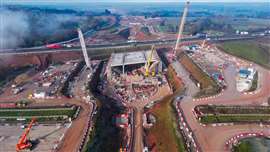 Construction of a 14,500-tonne box structure designed to take the UK’s new high-speed HS2 railway under the A46 Kenilworth Bypass in Warwickshire. (Image: HS2)
Construction of a 14,500-tonne box structure designed to take the UK’s new high-speed HS2 railway under the A46 Kenilworth Bypass in Warwickshire. (Image: HS2)
Commenting on the Stewart Review, the Institution of Civil Engineers director of policy and external affairs Sam Gould said, “The Stewart Review echoes many of the findings in the ICE’s paper on lessons learned from cancellation of HS2’s the northern leg. Namely, projects of this scale need clear objectives from the start, they need to spend more time in development, and who makes decisions needs to be crystal clear.
“The UK has the engineering and design capability to create world-leading infrastructure – this is borne out by some of the incredible engineering HS2 has already delivered.
“What must change is how we approach planning and delivery, or the cycle will repeat itself.”
He said he hoped the clarity provided by the UK government’s recent Spending Review and the creation of the National Infrastructure and Service Transformation Authority (NISTA) would create the right environment for projects to be successful, but these lessons needed to be applied as the government’s 10 Year Infrastructure Strategy is introduced.
High-speed railway woes not limited to the UK
Although HS2 has been a high-profile failure, it is not the only high-speed railway in the western world that has run into significant problems.
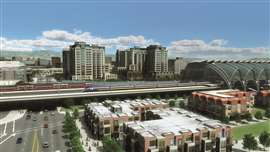 SENER has been involved in the high speed rail line in California, US
SENER has been involved in the high speed rail line in California, US
California High-Speed Rail faces the loss of $4 billion in government grants, after a scathing report claimed there is “no way forward” for the multi-billion-dollar project.
The 300-page Federal Railroad Administration (FRA) Compliance Review Report found earlier this month that the project is “in default of the terms of its federal grant awards”.
US President Donald Trump told reporters in May that the government was “not going to pay” for the project.
In response to those comments, California Governor Gavin Newsom, a Democrat, said that it would be “reckless” to walk away from the project. With 50 structures already built and the track-laying phase about to start, terminating the project would waste billions of dollars already invested, he argued.
STAY CONNECTED


Receive the information you need when you need it through our world-leading magazines, newsletters and daily briefings.
CONNECT WITH THE TEAM









